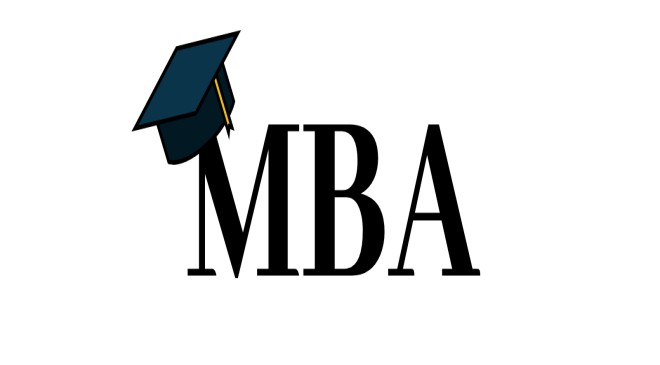India produces more than 300,000 management graduates every year, per AICTE data. Master of Business Administration (MBA) is one of the most sought-after education programmes in the country. A degree from a good institute can land you a dream job with good perks and hefty packages, taking away a lot of future financial uncertainties. However, it comes at a cost.
The average fee for a two-year management programme from an IIM (Indian Institute of Management) is around Rs 25 lakh; it was Rs 12 lakh in 2012-14. You or your parents may have savings, but given the galloping fees of B-schools, it might fall short. And if finances are not planned properly, the chances of getting an MBA degree from a coveted institute are slim. In such a situation, instead of emptying out your savings, it is prudent to look at other options to fund your management studies.
course of action
Read More: LPG prices slashed, ATF rates increased from Nov 1; check latest prices here
An education loan is one option. It not only bridges the gap between your available savings and the actual amount required, but also provides funds at low interest rates, along with the benefit of tax deduction on interest under section 80E of the Income Tax Act. Also, there is a deferred payment facility available for students along with a concession of 0.5 per cent on interest for girls taking education loans.

There are plenty of options available for education loans from public sector banks (PSBs), private banks, non-banking financial companies (NBFCs) and fintech companies. However, it may be difficult to choose the best option to fund your management education due to various reasons. Among them is interest rates, as this determines future cash flow. It is pertinent to note that interest rates on education loans are lower if availed from a PSB, while private banks’ rates are slightly higher (See table Getting the Math Right). No doubt, PSBs are a good option, but private banks and NBFCs have an edge in terms of time taken to process a loan.
“Apart from dipping into the family’s savings, students can utilise prime ways to finance their MBAs,” says Amit Singh, Founder of UniCreds, a platform offering education loans to Indian students to study abroad. Financing through NBFCs, says Singh, gives better chances of approval. However, the type of bank is one of the several factors that dictate your interest rate, apart from the course you are doing, the institute, the security pledged and your credit score, etc.
Read More: GST Collection at Rs 1.52 lakh cr in October, Second Highest Ever
Don’t be disheartened, though. You can also get your MBA sponsored by your employer. Although seldom used, if a company values an employee enough, it may finance a portion of the employee’s MBA fees. However, such arrangements often involve a commitment from the employee to work with the company for a number of years after graduation, making it less attractive, he adds. “Earning while doing the course is also an option,” adds Singh. Aspiring students can also look for scholarships such as those offered by IIMs, or those offered by private institutes.
choppy or plain sailing?
Studying abroad also involves the element of foreign exchange (forex) rates, as a depreciating rupee can compel students to shell out more money to complete their MBA. “Increasingly, we are seeing the effects of inflation and a falling rupee impact students studying abroad. Interest rates are rising worldwide, causing students with a floating-rate loan to experience rising monthly payments; and a falling rupee means that many will encounter a last-minute financial shortfall,” says Manu Smadja, CEO and Co-founder of MPOWER Finance, a US-based public-benefit corporation that provides loans to international students.
Experts confirm that this shortfall has also led to a jump in demand for top-up education loans. GyanDhan, an education financing marketplace, ran a pilot programme during July-August 2022, where the company received 200 applications from students for top-ups, compared to data from the corresponding period in the previous year, where it received only one or two such applications. However, students who take dollar-denominated loans, Smadja says, enjoy the certainty that they will have the necessary funds available when they need. “They also don’t have to worry about exchange rates.” Per experts, going for a study loan in the currency of the destination country makes sense for students who hope to earn in the same currency after their MBA. Apart from exchange rate fluctuations, it can also take some time to orient oneself to how much their money is worth in the destination country as forex rates can complicate international money transfers. For instance, a single £50 note is nearly equivalent to Rs 4,400 today.
Forex rates are just one complexity, though. There can be many blind spots that may end up costing students a lot. For example, at times, students miscalculate the schedule of expenses and end up taking higher disbursement upfront, increasing their overall interest payment. “A student might need Rs 10 lakh in the first year, but do they need it on Day One? A financially prudent method is to calculate the expenses for the next three months and get the disbursement accordingly,” says Ankit Mehra, CEO and Co-founder of GyanDhan.

Another mistake is not searching for alternatives. “They should explore scholarships, grants, zero-interest loans, community-specific funds, state-government funds and club funds. Finding these sources takes time and effort,” says Mehra. Some examples of such options are India Development and Relief Fund, JITO Education Loan programme, Marang Gomke Jaipal Singh Munda Overseas Scholarship, and Maulana Azad National Fellowship. Importantly, there are many lenders that readily extend a concession of 1 per cent on the interest rate to those willing to repay the EMIs during the moratorium period.
what’s your roi?
Education loans are based on a simple idea that after graduating, the borrower’s earnings will cover the costs of doing a degree. So, it is important to decide which university gives you the best return on investment (RoI). RoI is calculated as the average annual domestic salary divided by course fees (tuition fee+other fees) for the entire course. “The average salary after an MBA from IIMB will be Rs 33.82 lakh per annum, up 17 per cent from 2021. The tuition fee for an MBA from IIMB is Rs 24.5 lakh. Similarly, the total cost of an MBA from Harvard is $225,528 for 18 months, whereas the median salary after graduation is $150,500, exclusive of signing and performance bonus,” explains Mehra.
While students and parents are often inclined to use personal funds for educational expenses, experts say that the optimal way is to apply for low-cost loans from a lender and invest funds where they can get better returns. “For example, if I have Rs 30 lakh, and based on my past investment experience, I can get a 12 per cent return, it makes more sense to invest Rs 30 lakh, and borrow Rs 30 lakh from a lender at an effective interest rate of 6.3 per cent,” explains Mehra. Consequently, if not thought through properly, not taking an education loan can become an enduring burden.
@Teena_Kaushal



































